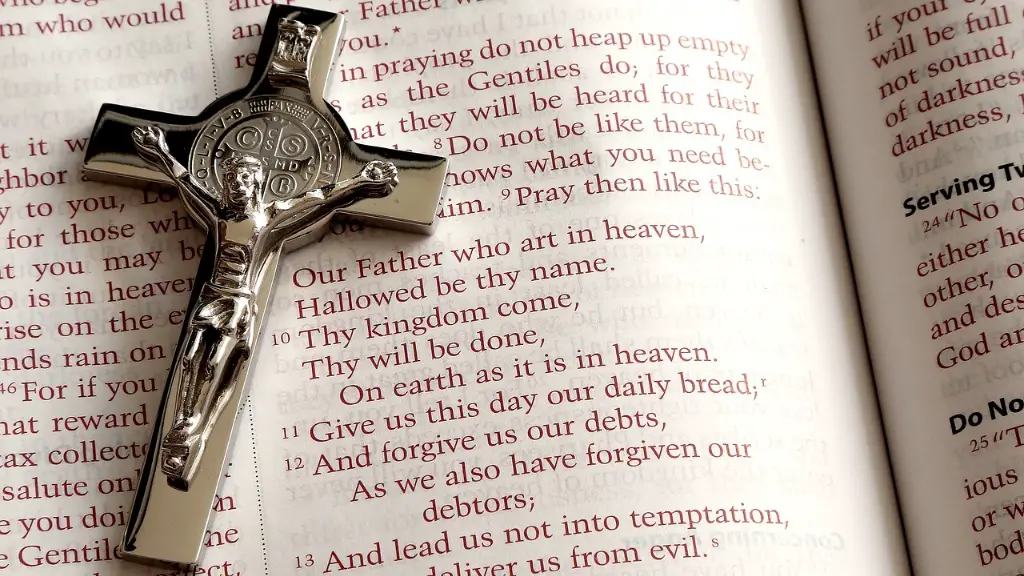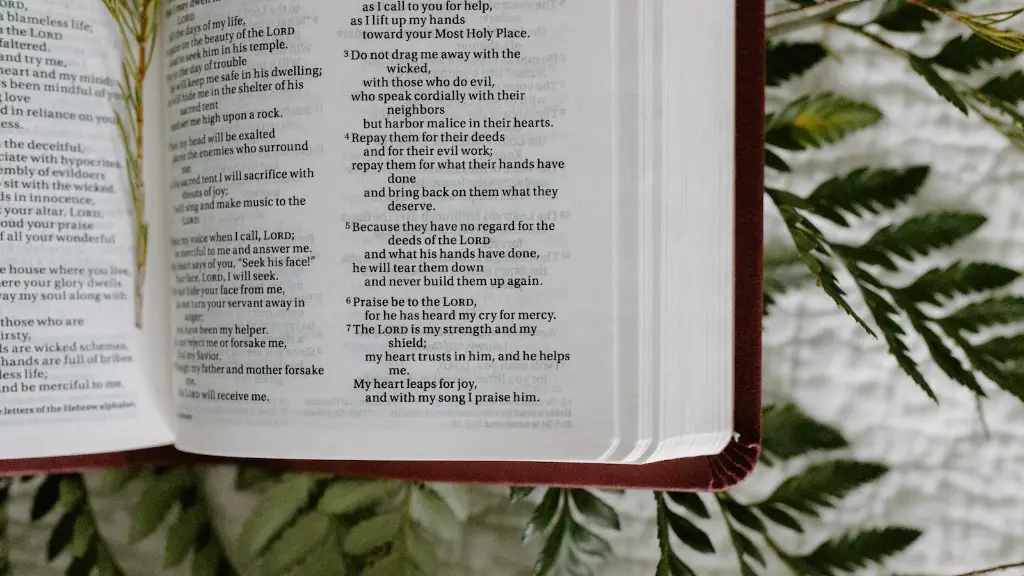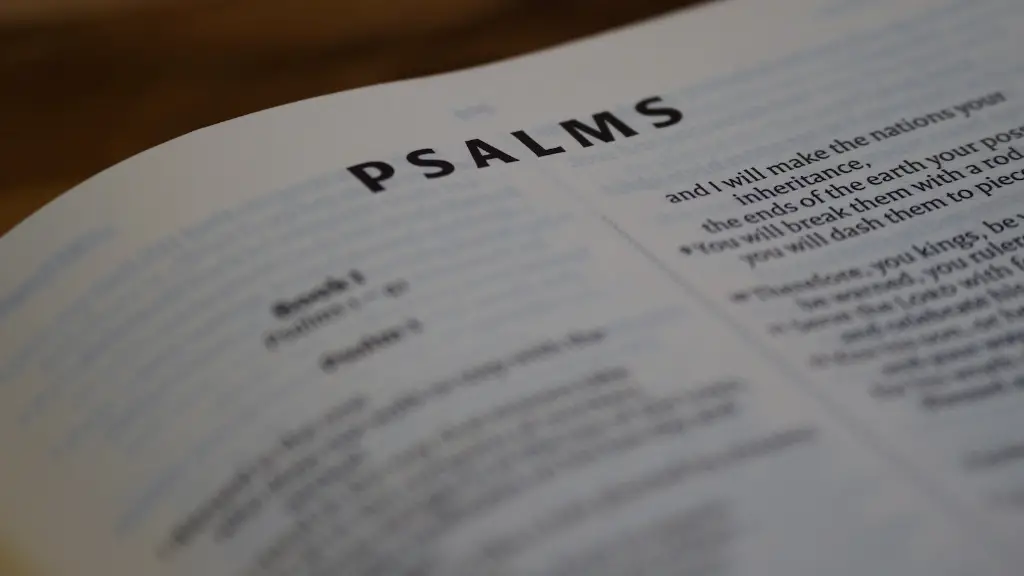What Is The Promised Land In The Bible?
The Promised Land is a term used in the Old Testament to refer to the land promised by God to Abraham, Isaac and Jacob and their descendants, according to the Bible. This land was promised to Abraham in Genesis 15:18-21, which states that God will give it to his descendants. The Promised Land is often referred to as the “Land of Israel” or “Canaan Land”. This article will explore what the Promised Land is, its history, and what role it plays in the Bible.
The Promised Land is sometimes referred to as the “Land of Milk and Honey” due to its plentiful resources. It was promised to the Jews, who were God’s chosen people, as a reward for their obedience and faith in Him. In the Bible, the Promised Land has a special significance, with many of the stories and events focussed around it. It is often referred to as a place of refuge, a source of spiritual nourishment, and a source of physical sustenance.
For the Israelites, the Promised Land was to be a place of spiritual renewal and growth. During the Exodus, the Israelites were led by Moses and Joshua to the Promised Land to enter into a covenant relationship with God. Joshua is particularly associated with the Promised Land, as he is the one responsible for leading the Israelites into it. Once they had entered the land, they were to take possession of it, claiming it as their own.
The Promised Land was also seen as a symbol of hope and prosperity for the Jews. It was a place filled with opportunity and growth, and it would form the basis for their nation for centuries to come. As such, the Promised Land was an important part of their identity and was frequently referred to in the Bible as the Land of Israel.
The Promised Land was also seen as a physical symbol of the presence of God, and His faithfulness towards the Jews. In the Book of Exodus, God makes a promise to the Israelites that He will never break, and He will always be with them in the Promised Land. God’s promise of protection and shelter is seen in several passages, including Exodus 3:12-14, where God says, “I will be with thee, and I will bring thee into the land which I swore unto Abraham, unto Isaac, and unto Jacob, to give it unto thee; I am the Lord.”
The Promised Land has been a sacred and important concept throughout Biblical history, and its significance has not diminished over time. It is a reminder that God is faithful to His people and is always faithful to His promises, and that He is always present to offer them guidance and protection.
Promise of Land in The Mosaic Law
In the Mosaic Law, the concept of the Promised Land was a central part of the covenant between God and the Jewish people. According to the law, the Promised Land was to be given to the Israelites as a possession, and this same law also served to regulate their daily lives and religious practices in the land. In addition, the Promised Land was to be a place of refuge for persecuted or oppressed people.
The Promised Land was also a symbol of the intimate relationship that the Jews had with God. Moses was given the task of making a covenant between them and the Lord which included the promise that the land would be theirs. It was held in trust by God to protect and provide for the Jewish people in the Promised Land.
The Promised Land was also seen as a sign of the covenant that God made with Abraham. When God promised Abraham that he would become the father of a great nation, He also promised that the Promised Land would be its homeland. As such, the Promised Land provided a sense of security for the Jews that no other nation could provide.
In the Mosaic Law, the Promised Land was seen as the place where the Jews would receive a unique destiny and mission in the world. It was a place where the nation of Israel could express its unique identity and contribute to the world. In addition, the Promised Land served as a place of refuge and a source of sustenance for the Jews.
Importance of The Promised Land in Judaism
The Promised Land has been an integral part of Judaism since its conception. It is seen as a place of refuge and protection for the Jews, and is seen as a physical representation of God’s faithfulness to His people. In the Book of Exodus, God’s promise to preserve and protect His chosen people is seen in the Promised Land, which is also seen as an assurance of prosperity and blessings.
In the land of Israel, the Jews were able to practice their faith and way of life free from persecution and oppression. The Promised Land provided them with a safe and secure home and served as a material reminder of their unique identity and history.
The Promised Land is also seen as a source of spiritual nourishment for the Jews. In the Torah, God commands the Jews to teach their children about the Promised Land, which serves as a reminder of God’s faithfulness and protection. As such, the Promised Land serves as a reminder to the Jews that God is always with them and that He is always faithful to His promises.
In modern times, the Promised Land has continued to have an important role in Jewish life and culture. For many Jews, the Promised Land is seen as a symbol of hope and stability, and a reminder of the strength of their identity and the enduring power of their faith.
Promised Land in Christianity
In Christianity, the Promised Land is seen as a key event in the life of Jesus Christ. In Luke 24:44-49, Jesus is seen declaring that the Promised Land is to be given to the Gentiles. This passage marks the beginning of the Gentile mission from the Jewish people, which is seen as a fulfillment of God’s promise to Abraham. As such, the Promised Land is seen as a reminder of the loving, merciful, and faithful nature of God.
The Promised Land is also seen as a symbol of hope and renewal in Christianity, as it marks the start of a new covenant between God and the people He has chosen. As such, the Promised Land serves as a reminder to the faithful of the promises made by God and His loving and upholding presence.
The Promised Land is also seen as a physical representation of the New Jerusalem, which is the location of the heavenly throne of God. In the Book of Revelation, the New Jerusalem is a place of peace, joy, and abundant blessings, and it is a reminder of the hope and eternal life offered to believers in Christ.
Promised Land in Islamic tradition
In Islamic tradition, the Promised Land is seen as a symbol of the unity and hope of the Islamic faith. In Surah 2:29 of the Quran, it is revealed that the Promised Land was the blessed location for the Israelites. In the same chapter, Allah instructs the Israelites to enter the Promised Land and construct a temple to worship God.
The Promised Land is also seen as a reminder to the Muslims of the rewards that come with obedience and faith in God. It also serves as a reminder of the promises made by Allah to the faithful, such as the promise of reward and victory if they did not give up their faith. The Promised Land is seen as a physical symbol of Allah’s power and mercy, and His everlasting care and guidance.
The Promised Land is also seen as a symbol of the unity of all Muslims, as it is a reminder that the Islamic faith is one united faith. All Muslims, regardless of language or ethnicity, are united through their faith, and the Promised Land is a reminder of this fact. As such, the Promised Land is seen as a place of hope, unity, and peace.
Political symbolism of the Promised Land
The Promised Land is a concept that has had a long history and a variety of meanings. In modern times, it has often been used as a source of political and religious symbolism. In the Middle East, the Promised Land has been a source of dispute between various nations and faiths, as each group attempts to claim the land as their own. As such, the Promised Land has become an important symbol of both religion and politics.
The Promised Land is also a symbol of political power and influence. For example, throughout the 20th century, the nation of Israel has been seen as a symbol of political stability and power in the region, and the Promised Land has been a major factor in the country’s success and prosperity. In addition, the Promise Land is also a symbol of hope, with many seeing it as a potential source of peace and prosperity in the region.
The Promised Land is also a sign of resilience and hope. Since its conception, various nations have tried to claim the land for their own and have caused immense suffering to the region. Yet, despite all the challenges, there is still hope for peace and stability in the region, and the Promised Land serves as a reminder of this hope.
Conclusion
In the Old Testament, the Promised Land is seen as a symbol of the covenant between God and the Jews and a reminder of His faithfulness and protection. In modern times, the Promised Land is a powerful symbol of hope and political power, and has been used as a source of spiritual nourishment and political symbolism. No matter its interpretation, the Promised Land has been a source of inspiration and courage for many generations.





